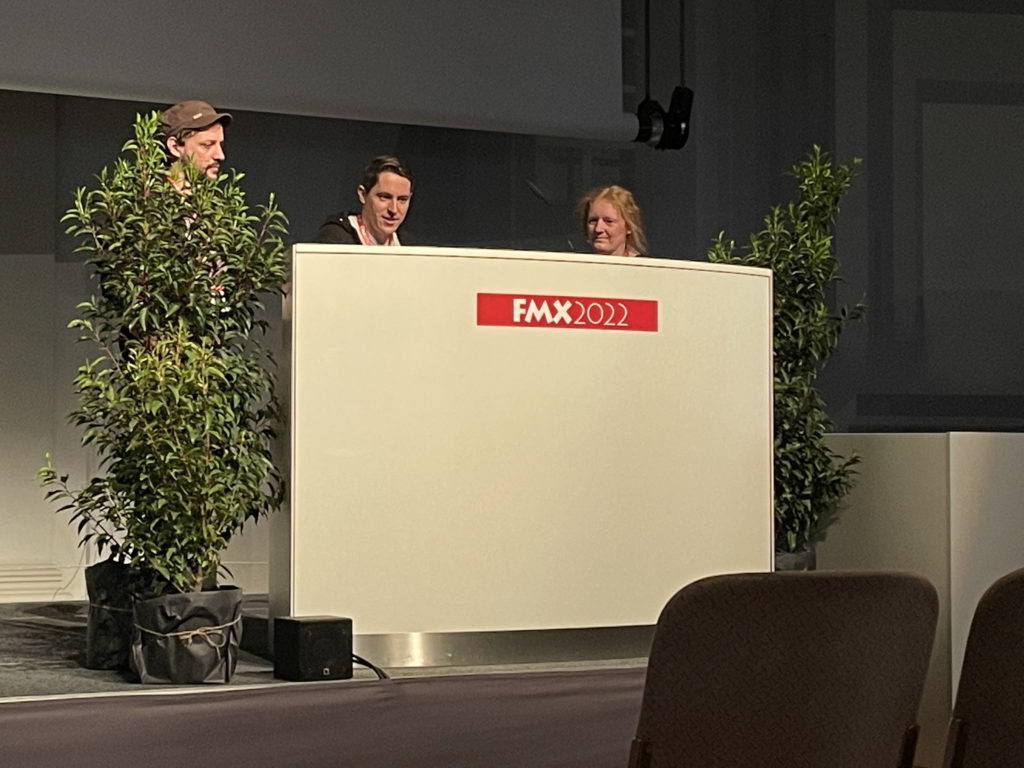
Chang Chi and the Legend of the Ring a Marvel Movie: Trixter and the Mythical Beasts.
It is a US martial arts fantasy film. It is about a Chinese legend, 10 magic rings, identity and the defence of the good.
A variety of mythological characters are brought to life. It begins with the exceedingly cute „Morris“. He is a supporting actor, a side kick for the main character and has a surprising and irritating physiognomy: 6 legs , 4 wings , lots of skin, lots of feathers, fluffy fur and lots of muscles, but no face. The briefing says: cuddly and cute.
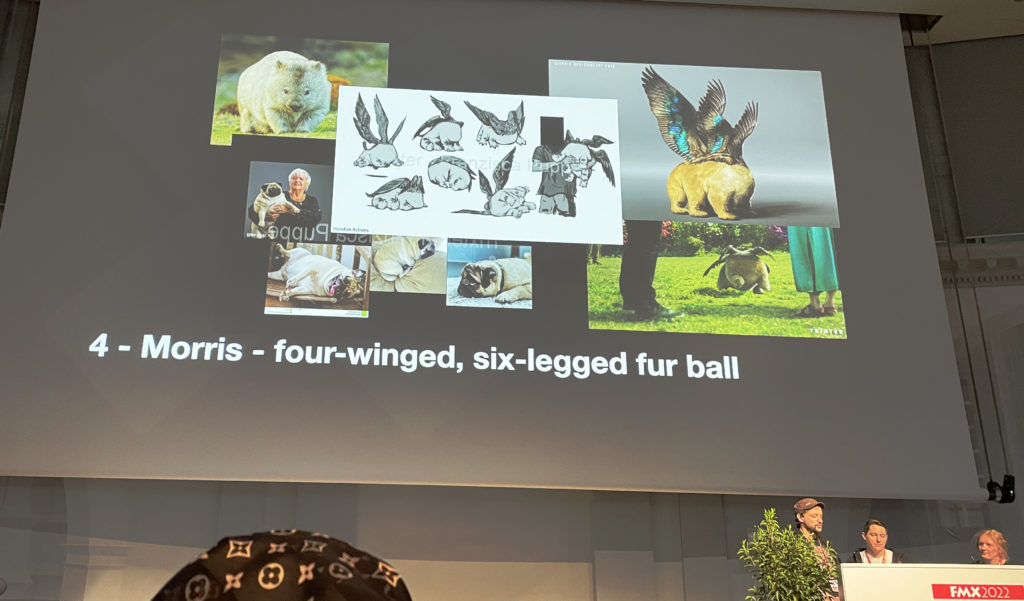
Morris is irritating. A little animal the size of a bulldog. It has no eyes, no nose, no mouth, no ears. It can’t taste, smell, hear or see. What can it do? The creatives of Trixter mentioned this fact as a challenge for their profession. Namely, to develop a cute little furry animal that must not be able to do anything. That is even adorable and so cute that the audience does not notice that they are fascinated by a creature that cannot live and should not live like that. The message Morris carries is easily broken down to: „I don’t need anything except human love. I don’t need to eat, I don’t need to breathe, I don’t need to taste, I don’t need to empty myself, I don’t need to be cared for. I am there, behaving like a young puppy dog, I am happy and dumb, I want to be protected, I give my life for that“. This is an animal, even if it is a mythical creature, being denied will and perception. Why are such creatures sold to the audience? Who came up with the idea? Why should there be an animal without a head and sensory perceptions?
Who is responsible for the content? Are the artists partly responsible? Or are they workers who understand the technique, the craft and give a face to such performances? It is a despicable idea and yet it must be given a delightful form and façade and given life.
For what Trixster has done is phenomenal. The movement, musculature, skeleton, functionality, fat, skin, fur are deceptively real. Viewers can fall in love with this creature.
The creatives of Trixster flex their muscles. It is for no reason that this studio is an Oscar winner. Back to our dubious character. He has the already mentioned six legs. The paws resemble those of bear cubs. Everything about this character is puppy-like. His behaviour is derived from Bulldogs, Sheepdogs Golden Retrievers. The voluptuous rolling in the sand on his back, the clumsy stumbling, the exuberant movements when running, jumping, sitting, everything is a bit awkward, just like puppies.
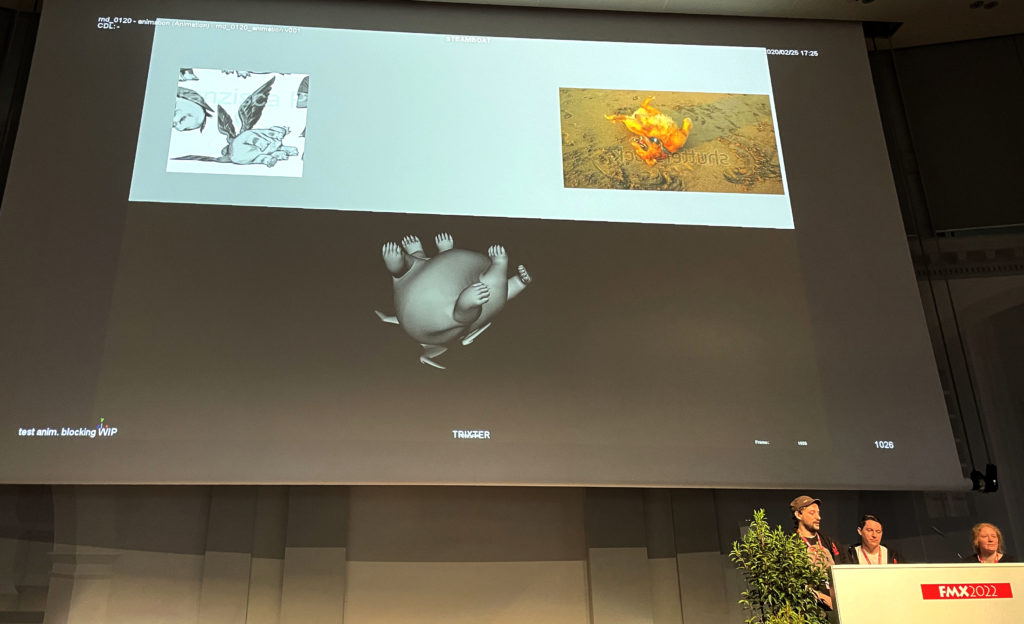
The character is built classically from the inside out. First the skeleton. This is where bones, ligatures, joints, type of movement, abilities and limitations are defined. Then the muscular system is added, a layer of fat is placed on top, followed by the skin. Everything is finished off with a voluminous, very soft-looking layer of fur. The legs are short, the torso rather chubby and shows no further definition.
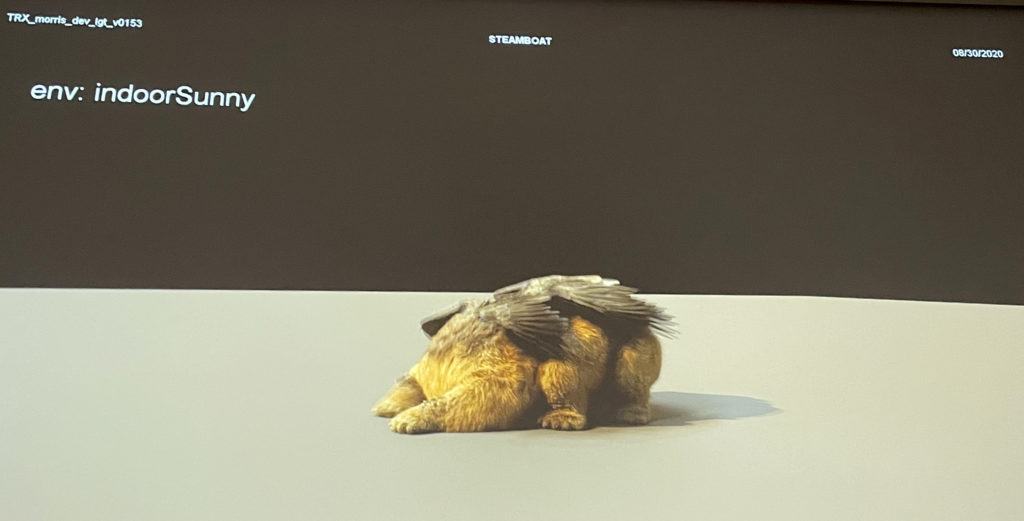
On the back are the four wings. They shimmer in blue and green tones in some places. The function of these wings is not to fly, but to convey moods through gestures. Morris does not bark, does not snort, does not breathe, but he sometimes creates a beeping sound.
Exact research of motion sequences and studies are required for the creation of such a character…. Motion tracking is sometimes used, but in many cases it is the close observation skills of the creators. We know four-legged dogs, so the creatives had to think about the two extra legs. Is the movement accentuated by double hind legs or is the forward movement emphasised? The decision goes to the hind legs and so this lovable character hops and jumps through the film. Of course, he is also loved. For he is one who likes to jump on the lap, wants to be cuddled. He has no other function. How does the fat shift, how does the fur behave under a hand? It’s about many detailed special conditions. How does the fur shine when it is implemented from the virtual situation into real film – these questions are answered.
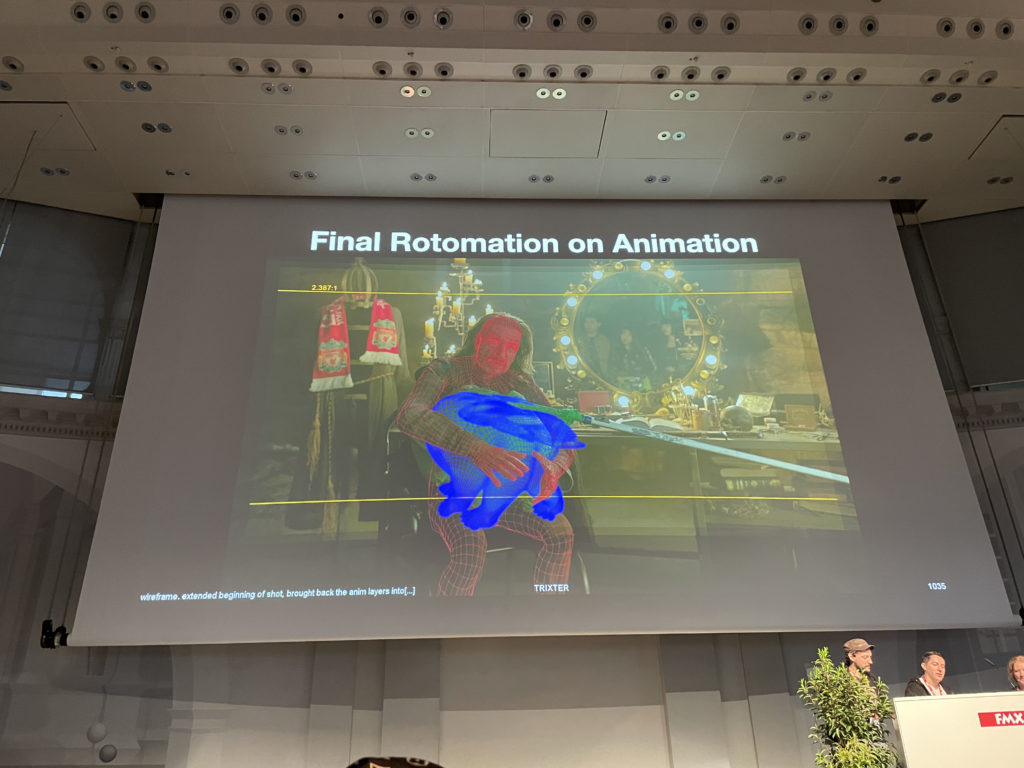
A very high degree of reality is evoked. The accuracy and the perception of detail are overwhelming. Movements are fluid, consistently smooth and elegant. Surfaces adjust precisely to changing positions. It is convincing. Only behavioural scientists would detect too much softness in the movements at some points. Nature is often more complex, viewers might know, because if you watch dogs or horses closely, you will notice many quick micro-movements that marginally break the flow of the softness. The virtual elegance of movement makes the fantasy figures look more harmless. The unpredictable is not captured. But then, it’s not supposed to.
It is an overwhelming amount of movements of the whole body, special gestures and expressions that are conceived and made possible. Stretch, jump, stand up, straighten, walk, stand, run, rest, graze, fall, roll, limp, play, enjoy, yawn, eat, drink, spin…. an endless list. There is detailed work being done.
It would be interesting to compare the amount of joints, tendons, cartilage, muscle etc. from an animal to that of fantasy creature.
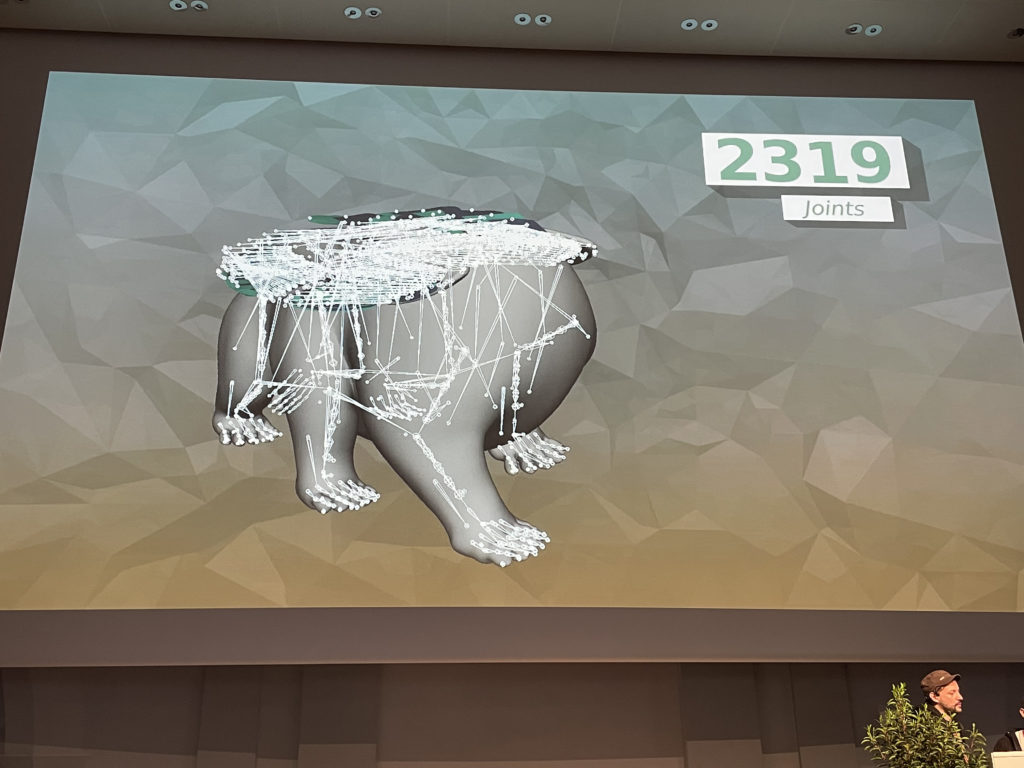
The presentation does not stop with Morris. The other characters, such as the multi-tailed snow fox, a kind of iridescent horse, huge village dogs cross-bred to lions and sabre tigers, or the Goliath-like Hulk are introduced in the same way. First they talk about the basic structure, then about movement sequences, and about how they fit into the rest of the film. Numbers are mentioned, the sheer amount of work is brought into focus. There are so many challenges to overcome. The audience listens breathlessly. Just the question of how the lighting situation of a virtual character is exactly adapted to a real situation. What about Pure black matching? It’s a bottomless pit.

The professionals from Trixter give a detailed insight into their work. At the end there is clapping, some shouts of joy, but probably from Trixter employees. They rightly celebrate the result and their colleagues.
A final word, however, on the content of the film. Quite detached from the performance from the special effects department: The author would like to reflect on the quality of the content of today’s films. In this context, we may refer to a speech by John Landgraf, the boss of FX, during an address he gave at the Television Critics Association press tour in the summer of 2015. At that time, the quality and sheer quantity of TV series was already being reflected upon.
Landgraf reflects on the quality of the scripts and notes that they lead to results that are watchable but unremarkable. And asks for those that are wonderful and innovative, weird and special and provocative. The market releases film after film, almost one too many, and the quality is not bad, it is often good, but not outstanding. He explains it with the immense time pressure to produce on a daily basis. But the new is not discovered in this way. More often the well-known scriptwriters are called upon. But this puts similar stories and plays on the market. Viewers are willing to watch well-produced, technically excellent media, but at some point it gets boring.
„To be clear, there are plenty of stories and plenty of people, many of whom are underserved and underappreciated and rarely heard. But he’s right that the finding of them (and the hiring and the choosing and the training and especially the nurturing and supporting and protecting of talent for a good outlet that wants to do those things) does take time and commitment. And while everybody making more stuff should lead to more chances for underrepresented voices to be heard, it can easily lead to the opposite: going back to the same people over and over again because it’s easier and faster and it feels safer, and you don’t have all day to go beyond your existing Rolodex. And when money is hard to come by, it’s often the new voices that are sacrificed first.“
The film industry is repeating itself, albeit with better technology and great special effects, but that no longer sufficiently distracts from the sometimes far-fetched filmic content. Even the super-professionals from Trixter can’t fight this.
Post by Prof. Ursula Drees


Comments are closed.